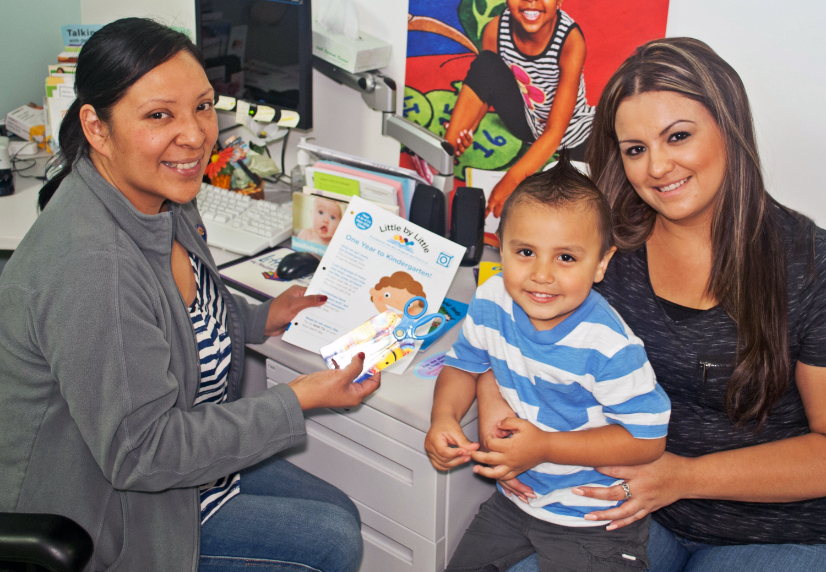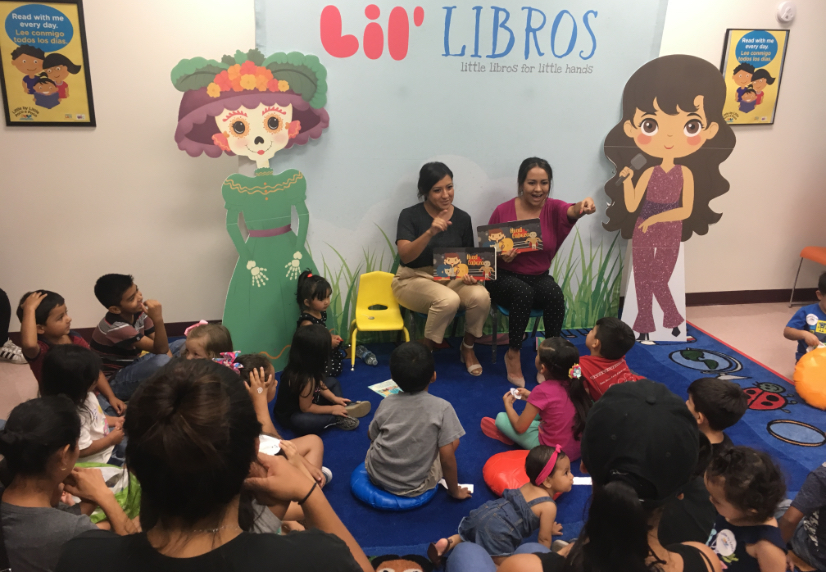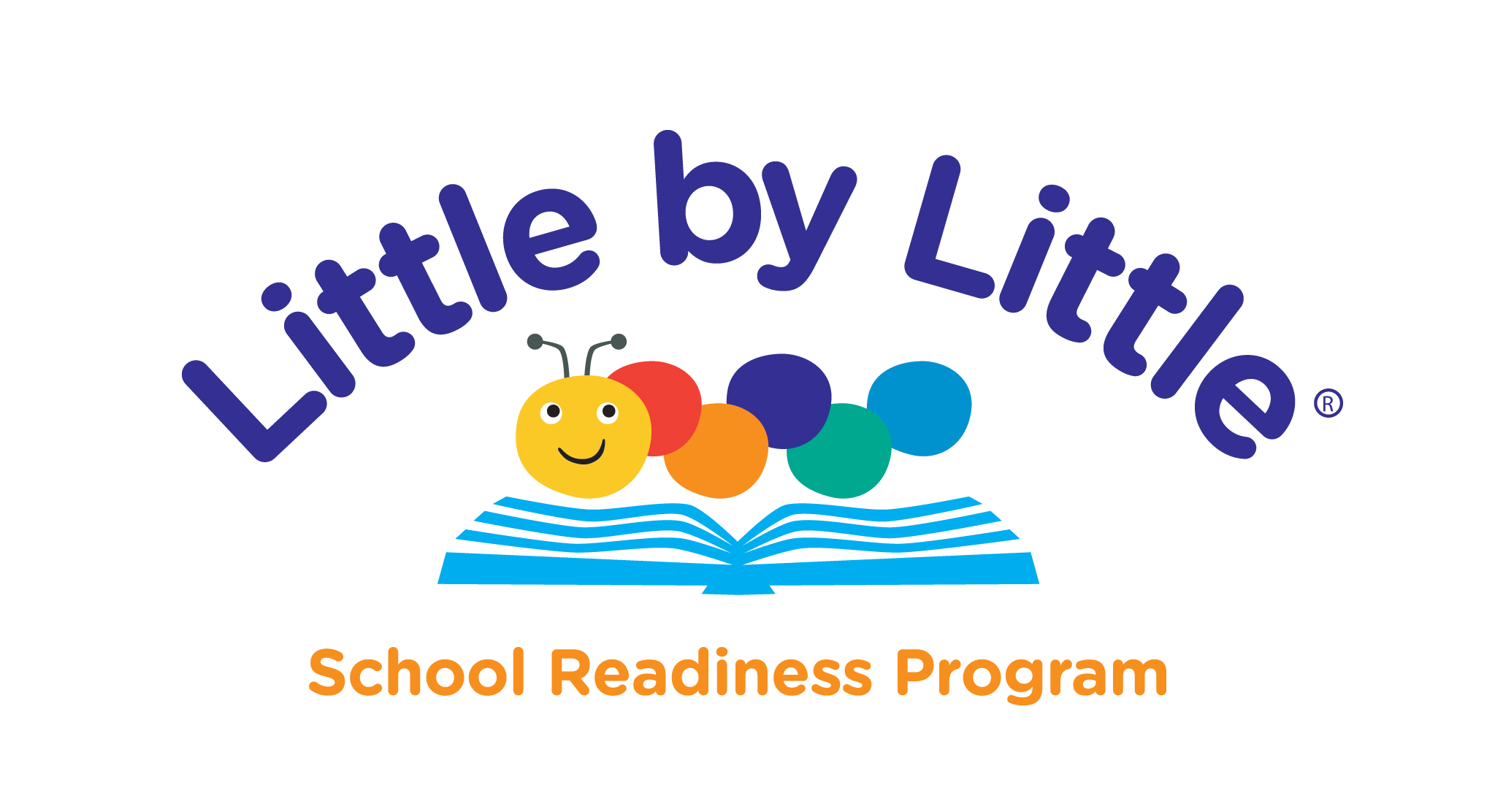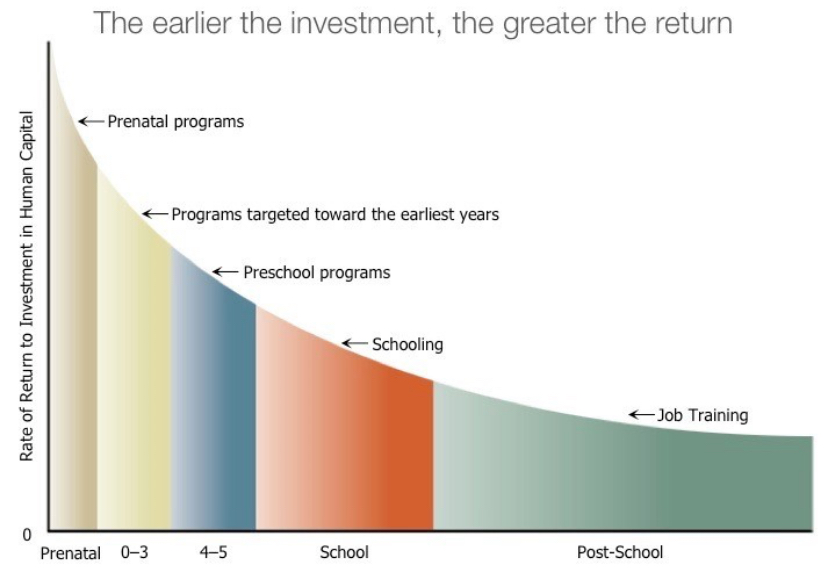The Importance Of Early Literacy
Early literacy means helping children develop a rich vocabulary, self-expression, and reading comprehension—tools they need to become successful readers and lifelong learners. These skills allow a young child to enter kindergarten with a love of books and a readiness to learn.
Why is Early Literacy Important For Families and Communities?
Parents want nothing more than for their children to be healthy, happy, and successful in life. The ability to spend time with your children, and provide them with tools and activities that support their language development can depend on the community that you live in and the resources available. Families living in communities with fewer resources and less long-term investment have more barriers to engaging their children in early literacy activities. The differences are quantifiable early and can lead to a 30-million-word gap (# of words a child has been exposed to) by age 3. The effects of this word gap persist as children enter kindergarten. Children from families with a lower income have been shown to perform below their peers and remain behind throughout their school years.
The Little by Little Program helps to reduce this word gap because the program is designed to provide knowledge and resources to families so they can begin to foster and support early literacy habits at home on a consistent basis. The program provides high-quality educational books, as well as guidance on the importance of reading to increase a child’s vocabulary, comprehension and language skills, and on the critical role parents play in preparing their kids for school.
Early Childhood Literacy Disparities and Ongoing Impacts
Where you start out in life shouldn’t determine where you end up. But the reality is, young children from families facing financial instability experience fewer activities and opportunities that foster their emergent literacy skills, compared to children from families with higher, more stable income. Children who fall behind early are less likely to catch up, and they tend to remain behind as they move through successive grades at school.

Missing the Critical Window for Brain Development
Research tells us that the first three years of life are critical for a child’s brain development. By age 2, a child’s brain is as active as an adult brain and by age 3, a child’s brain is twice as active as an adult brain. If a child is not stimulated during this critical period, learning is much more difficult and less successful for that child, even in a learning enriched environment.

Falling Behind and Staying Behind
Children, particularly those from families facing barriers to economic stability, who fall behind academically tend to stay behind throughout their school years. Studies have found that children are much more likely to have reading challenges at the end of fourth grade if they were experiencing reading challenges at the end of first grade.

Lower High School Graduation Rates and Lower Salaries
Individuals without a high school diploma or an equivalent (such as a GED) earn the lowest salary compared to all other education levels and have the greatest risk for unemployment. Despite rising national graduation rates, students who are from families facing financial challenges continue to lag behind their peers in finishing high school and may be less prepared to enter the workforce, pursue technical training, or enroll in higher education.
Higher Adult Illiteracy Rates
Literacy deeply and persistently impacts access to education, economic prosperity, and opportunity. Adults struggling with literacy are more likely to be from communities that have been under-resourced and often miss out on opportunities to participate to their full potential in the workforce. Currently, over 40 million American adults are functionally illiterate and are unable to read above a fifth-grade level.
The Consequences of Low Literacy Are Alarming
The consequences of low literacy can be profoundly challenging and can impact a child’s success in school and life. This is particularly true for children from families and communities facing barriers to progress and with fewer literacy resources available.
of families with lower incomes have no children’s books in their homes.
of children arrive at kindergarten without the skills necessary for lifelong learning.
of children from communities that are facing barriers to progress enter first grade up to two years behind their peers.
of America’s fourth graders read below proficiency level, and 82% of those children are from families with fewer resources available.
Supporting Early Literacy for Children and Families
The Little by Little School Readiness Program is designed to provide the knowledge and resources to families engaged in the WIC program so they can begin to foster early literacy habits at home. The Little by Little Program works to reinforce the need to start reading with children early, and the critical role parents play in preparing their children for school and lifelong success.

More Books in the Home
WIC families who participate in the Little by Little Program have a higher number of books in the home, compared to families who receive WIC services alone. Little by Little Program participants receive up to four high-quality educational books per child, per year, helping to build a home library for the whole family to share and enjoy, while supporting early literacy development and comprehension skills.

Increased Daily Reading to Children
WIC families participating in the Little by Little Program read to their children more often, compared to families who receive WIC services alone. Teaching letters, words, or numbers and playing music and singing together also increases due to program participation among WIC families.

More Knowledge of Child Development
WIC families participating in the Little by Little Program know more facts about child development compared to families who don’t participate in the program. Engaging in activities to enhance child development also increases due to program participation in the Little by Little Program among WIC families.

Increased School Readiness in Children
WIC children participating in the Little by Little Program had significantly increased school readiness scores compared to children who were only participating in WIC. These program evaluation findings for school readiness were published in March 2011 by the Journal of Pediatrics.
In Los Angeles County, the Little by Little Program costs approximately $52 per child per year.
Your gift of any amount helps children engage in strong literacy practices and prepare for lifelong success.


